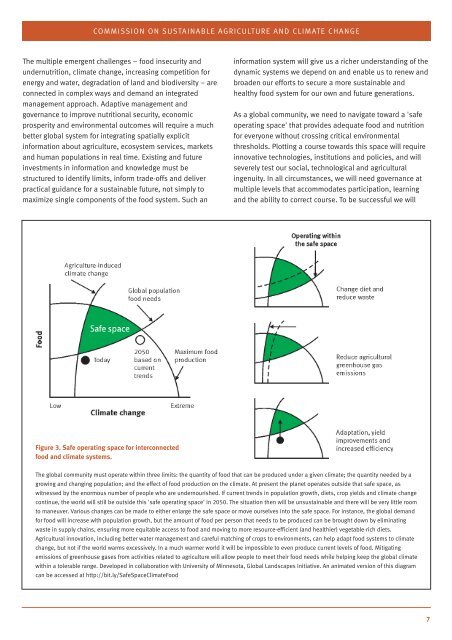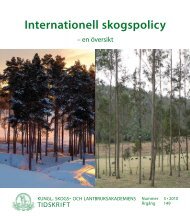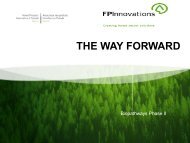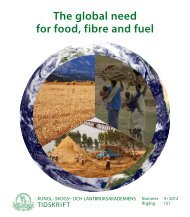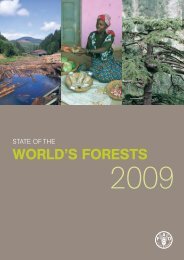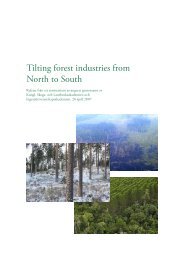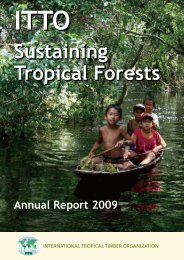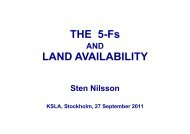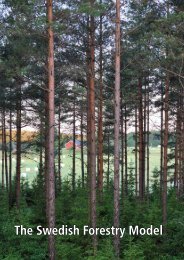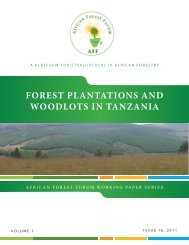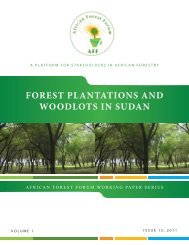Achieving food security in the face of climate change - CGSpace ...
Achieving food security in the face of climate change - CGSpace ...
Achieving food security in the face of climate change - CGSpace ...
Create successful ePaper yourself
Turn your PDF publications into a flip-book with our unique Google optimized e-Paper software.
COMMISSION ON SUSTAINABLE AGRICULTURE AND CLIMATE CHANGE<br />
The multiple emergent challenges – <strong>food</strong> <strong>in</strong><strong>security</strong> and<br />
undernutrition, <strong>climate</strong> <strong>change</strong>, <strong>in</strong>creas<strong>in</strong>g competition for<br />
energy and water, degradation <strong>of</strong> land and biodiversity – are<br />
connected <strong>in</strong> complex ways and demand an <strong>in</strong>tegrated<br />
management approach. Adaptive management and<br />
governance to improve nutritional <strong>security</strong>, economic<br />
prosperity and environmental outcomes will require a much<br />
better global system for <strong>in</strong>tegrat<strong>in</strong>g spatially explicit<br />
<strong>in</strong>formation about agriculture, ecosystem services, markets<br />
and human populations <strong>in</strong> real time. Exist<strong>in</strong>g and future<br />
<strong>in</strong>vestments <strong>in</strong> <strong>in</strong>formation and knowledge must be<br />
structured to identify limits, <strong>in</strong>form trade-<strong>of</strong>fs and deliver<br />
practical guidance for a susta<strong>in</strong>able future, not simply to<br />
maximize s<strong>in</strong>gle components <strong>of</strong> <strong>the</strong> <strong>food</strong> system. Such an<br />
<strong>in</strong>formation system will give us a richer understand<strong>in</strong>g <strong>of</strong> <strong>the</strong><br />
dynamic systems we depend on and enable us to renew and<br />
broaden our efforts to secure a more susta<strong>in</strong>able and<br />
healthy <strong>food</strong> system for our own and future generations.<br />
As a global community, we need to navigate toward a 'safe<br />
operat<strong>in</strong>g space' that provides adequate <strong>food</strong> and nutrition<br />
for everyone without cross<strong>in</strong>g critical environmental<br />
thresholds. Plott<strong>in</strong>g a course towards this space will require<br />
<strong>in</strong>novative technologies, <strong>in</strong>stitutions and policies, and will<br />
severely test our social, technological and agricultural<br />
<strong>in</strong>genuity. In all circumstances, we will need governance at<br />
multiple levels that accommodates participation, learn<strong>in</strong>g<br />
and <strong>the</strong> ability to correct course. To be successful we will<br />
Figure 3. Safe operat<strong>in</strong>g space for <strong>in</strong>terconnected<br />
<strong>food</strong> and <strong>climate</strong> systems.<br />
The global community must operate with<strong>in</strong> three limits: <strong>the</strong> quantity <strong>of</strong> <strong>food</strong> that can be produced under a given <strong>climate</strong>; <strong>the</strong> quantity needed by a<br />
grow<strong>in</strong>g and chang<strong>in</strong>g population; and <strong>the</strong> effect <strong>of</strong> <strong>food</strong> production on <strong>the</strong> <strong>climate</strong>. At present <strong>the</strong> planet operates outside that safe space, as<br />
witnessed by <strong>the</strong> enormous number <strong>of</strong> people who are undernourished. If current trends <strong>in</strong> population growth, diets, crop yields and <strong>climate</strong> <strong>change</strong><br />
cont<strong>in</strong>ue, <strong>the</strong> world will still be outside this 'safe operat<strong>in</strong>g space' <strong>in</strong> 2050. The situation <strong>the</strong>n will be unsusta<strong>in</strong>able and <strong>the</strong>re will be very little room<br />
to maneuver. Various <strong>change</strong>s can be made to ei<strong>the</strong>r enlarge <strong>the</strong> safe space or move ourselves <strong>in</strong>to <strong>the</strong> safe space. For <strong>in</strong>stance, <strong>the</strong> global demand<br />
for <strong>food</strong> will <strong>in</strong>crease with population growth, but <strong>the</strong> amount <strong>of</strong> <strong>food</strong> per person that needs to be produced can be brought down by elim<strong>in</strong>at<strong>in</strong>g<br />
waste <strong>in</strong> supply cha<strong>in</strong>s, ensur<strong>in</strong>g more equitable access to <strong>food</strong> and mov<strong>in</strong>g to more resource-efficient (and healthier) vegetable-rich diets.<br />
Agricultural <strong>in</strong>novation, <strong>in</strong>clud<strong>in</strong>g better water management and careful match<strong>in</strong>g <strong>of</strong> crops to environments, can help adapt <strong>food</strong> systems to <strong>climate</strong><br />
<strong>change</strong>, but not if <strong>the</strong> world warms excessively. In a much warmer world it will be impossible to even produce current levels <strong>of</strong> <strong>food</strong>. Mitigat<strong>in</strong>g<br />
emissions <strong>of</strong> greenhouse gases from activities related to agriculture will allow people to meet <strong>the</strong>ir <strong>food</strong> needs while help<strong>in</strong>g keep <strong>the</strong> global <strong>climate</strong><br />
with<strong>in</strong> a tolerable range. Developed <strong>in</strong> collaboration with University <strong>of</strong> M<strong>in</strong>nesota, Global Landscapes Initiative. An animated version <strong>of</strong> this diagram<br />
can be accessed at http://bit.ly/SafeSpaceClimateFood<br />
7


